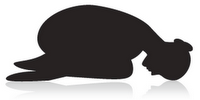Time Excuses:
"I will be late for work if I exercise in the morning" or "I have a ton of errands and housework to do tonight"

These excuses essentially stem from a lack of planning. If you prefer to exercise in the morning, but are always running late, set your alarm for a half hour earlier. An early morning workout can really get you energized for the rest of the day! If miscellaneous errands and housework are overtaking your day, try to limit the amount of time that they take by scheduling all of them in one day. Condensing all of these tasks into a single day leaves the rest of the week wide open for exercise and other activities!
Family Excuses :
"I don’t spend enough time with my family" or "My family won't support me with my diet and exercise program"
Many families lead very hectic lifestyles, therefore, it is important that you spend quality time together whenever possible. So why not spend some time exercising with them? Go on a hike, go swimming, or take a walk together in the park after dinner. If your family hasn’t yet jumped on the fitness and nutrition bandwagon, be a good role model for them. Once they see you reaping the benefits of living a healthier lifestyle, they will likely decide to join you.
Work Excuses :
"I work long hours and don’t feel like exercising when I get home" or "I am physically active at my job"
Even if you have worked all day long, it is still important to exercise. Not only will the exercise boost your energy level for the rest of the day, but it will also help you unwind from the stress of the day. Jobs that are physically demanding are often tedious and stressful. It is important to do some exercise that is not work-related in order to work off the tension that builds up during the day. Doing a different type of physical activity may also help prevent your muscles from being so sore from doing a repetitive task all day long.
Emotional Excuses:
"I'm too depressed to exercise" or "I'm bored with my current routine"
Whether you are just feeling down-in-the-dumps, or have actually been diagnosed with depression, exercise may be just what the doctor ordered! Exercising naturally raises the level of the chemical serotonin, which has a direct effect on our emotional state,. If you are bored with your current exercise routine, simply try a new one, or experiment with a variety of routines. If you exercise alone, invite a friend to join you. You could also join a fitness club, which would also give you many exercise options.















